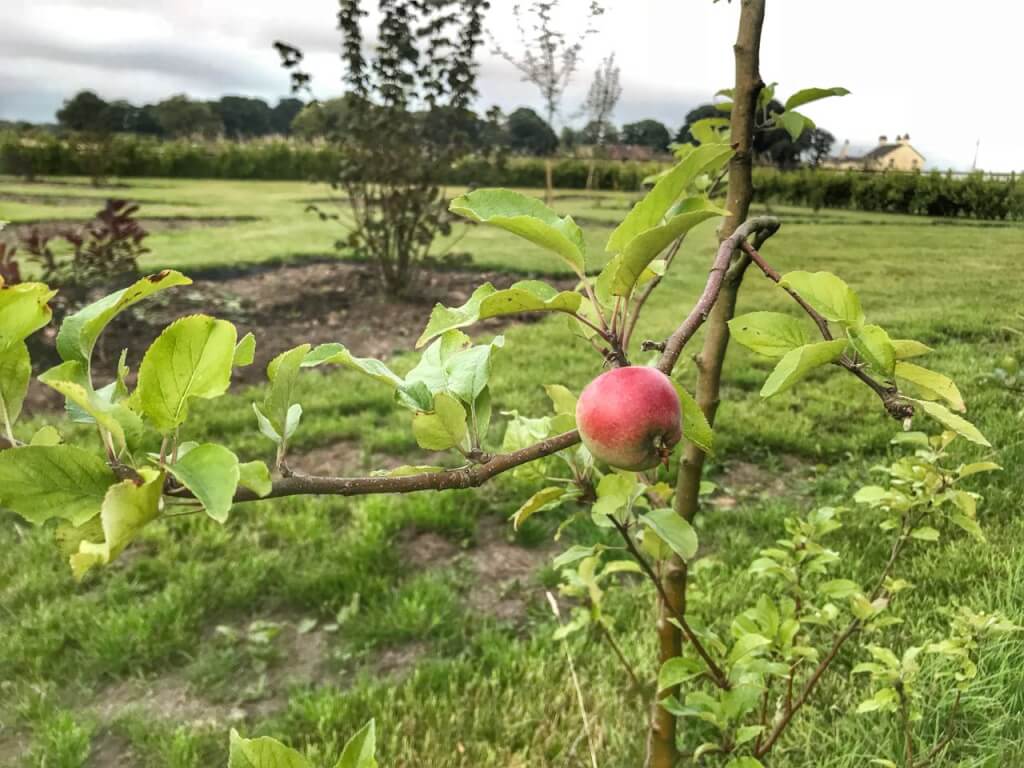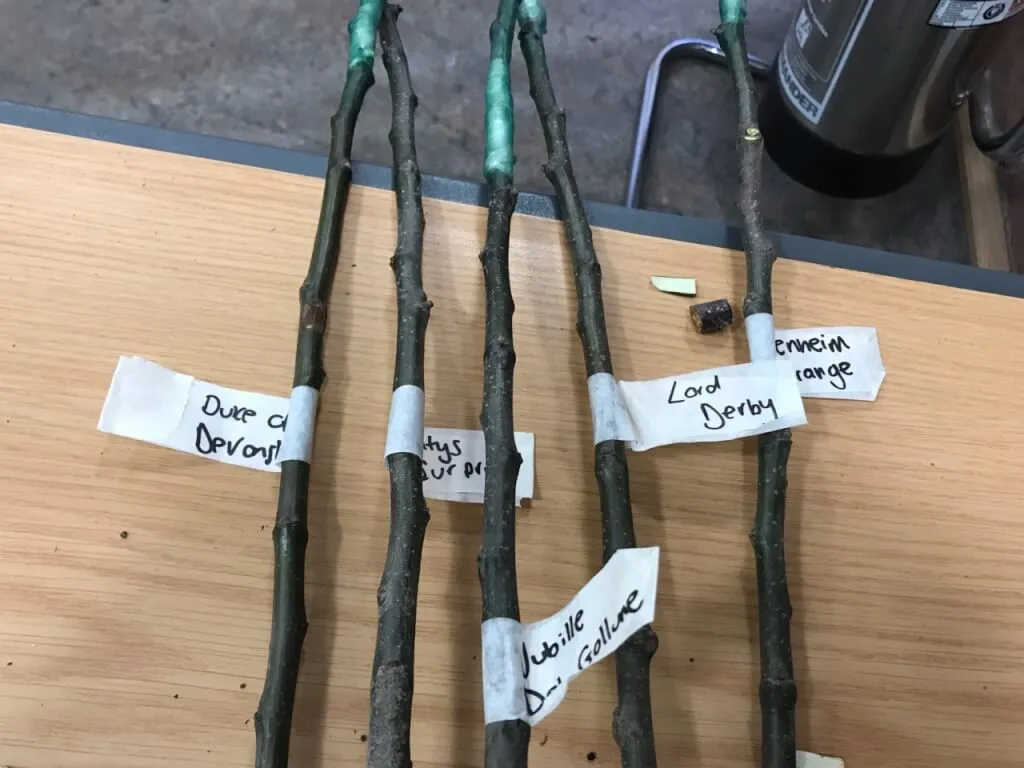Hi @psa
I'm sorry to hear your apple tree has canker. Canker can be a real problem with any tree, and once you have it, unless you're fast off the mark to prune out all of the canker quickly, it can devastate and ultimately kill a tree. For the uninitiated amongst us, let me first explain what canker is on an apple tree and how you can save it and potentially propagate it via fruit tree grafting.
What is apple tree canker?
Apple canker is a fungal disease caused by the pathogen Neonectria ditissima. It primarily affects apple trees, causing sunken, discoloured lesions or cankers on the bark, branches, and stems. These cankers can girdle the affected parts of the tree, disrupting the flow of water and nutrients and eventually leading to dieback and decline. Sometimes, the canker looks like a wet bulge on the tree trunks that can ooze in summer. Below is a healthy apple tree with no canker or sign of infection.

How does canker spread on apple trees?
The disease is most commonly spread through spores produced on infected plant tissues, dispersed by wind, rain, or physical contact. It often enters the tree through wounds or pruning cuts, particularly during wet weather conditions when the spores are most active. Which is why clean pruning equipment and pruning fruit trees at the right time is essential, read here for more about summer vs winter fruit tree pruning.
How to spot apple tree canker
Symptoms of apple canker include small, reddish-brown lesions on the bark, which may ooze gum or sap. As the cankers expand, they may darken and develop a sunken appearance. Infected branches may exhibit dieback, with foliage wilting and turning yellow or brown.
Can you prune out canker?
Yes, if you're fast when it first emerges. To manage apple canker, it's essential to practice good orchard hygiene, including the prompt removal and destruction of infected plant material. Pruning tools should be disinfected between cuts to prevent the spread of the disease. Fungicidal sprays may be applied preventatively or as part of an integrated disease management program, particularly during the dormant season.
https://youtu.be/jQUHwhhOPKM
How to propagate apple trees when they have canker
The key here is to make absolutely sure that you use young one-year-old stems from the top of the tree that show no signs of infection. If you take cuttings of an infected apple tree and propagate from them, you just spread the fungus and canker, and it's bad gardening etiquette!
So, if there are stems that look clean and canker-free, the best way to propagate the fruit tree is via grafting.Read my guide here on how to graft. It may be a safer option to identify the apple tree and simply replace it with a healthy specimen, as grafting is not the easiest or quickest way to propagate fruit trees. Always make sure you burn any infected cankerous tree material.

How to stop apple canker
Planting resistant apple cultivars and maintaining tree vigour through proper nutrition and irrigation can also help reduce the risk of apple canker. Regular monitoring for symptoms and early intervention can minimize the impact of the disease and preserve the health and productivity of apple trees.
I hope that helps!
Lee Garden Ninja
Hi @psa
I'm sorry to hear your apple tree has canker. Canker can be a real problem with any tree, and once you have it, unless you're fast off the mark to prune out all of the canker quickly, it can devastate and ultimately kill a tree. For the uninitiated amongst us, let me first explain what canker is on an apple tree and how you can save it and potentially propagate it via fruit tree grafting.
What is apple tree canker?
Apple canker is a fungal disease caused by the pathogen Neonectria ditissima. It primarily affects apple trees, causing sunken, discoloured lesions or cankers on the bark, branches, and stems. These cankers can girdle the affected parts of the tree, disrupting the flow of water and nutrients and eventually leading to dieback and decline. Sometimes, the canker looks like a wet bulge on the tree trunks that can ooze in summer. Below is a healthy apple tree with no canker or sign of infection.

How does canker spread on apple trees?
The disease is most commonly spread through spores produced on infected plant tissues, dispersed by wind, rain, or physical contact. It often enters the tree through wounds or pruning cuts, particularly during wet weather conditions when the spores are most active. Which is why clean pruning equipment and pruning fruit trees at the right time is essential, read here for more about summer vs winter fruit tree pruning.
How to spot apple tree canker
Symptoms of apple canker include small, reddish-brown lesions on the bark, which may ooze gum or sap. As the cankers expand, they may darken and develop a sunken appearance. Infected branches may exhibit dieback, with foliage wilting and turning yellow or brown.
Can you prune out canker?
Yes, if you're fast when it first emerges. To manage apple canker, it's essential to practice good orchard hygiene, including the prompt removal and destruction of infected plant material. Pruning tools should be disinfected between cuts to prevent the spread of the disease. Fungicidal sprays may be applied preventatively or as part of an integrated disease management program, particularly during the dormant season.
How to propagate apple trees when they have canker
The key here is to make absolutely sure that you use young one-year-old stems from the top of the tree that show no signs of infection. If you take cuttings of an infected apple tree and propagate from them, you just spread the fungus and canker, and it's bad gardening etiquette!
So, if there are stems that look clean and canker-free, the best way to propagate the fruit tree is via grafting.Read my guide here on how to graft. It may be a safer option to identify the apple tree and simply replace it with a healthy specimen, as grafting is not the easiest or quickest way to propagate fruit trees. Always make sure you burn any infected cankerous tree material.

How to stop apple canker
Planting resistant apple cultivars and maintaining tree vigour through proper nutrition and irrigation can also help reduce the risk of apple canker. Regular monitoring for symptoms and early intervention can minimize the impact of the disease and preserve the health and productivity of apple trees.
I hope that helps!
Lee Garden Ninja
 Lee Burkhill: Award Winning Designer & BBC 1's Garden Rescue Presenters Official Blog
Lee Burkhill: Award Winning Designer & BBC 1's Garden Rescue Presenters Official Blog



